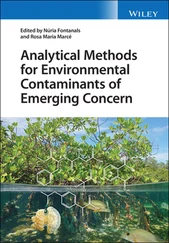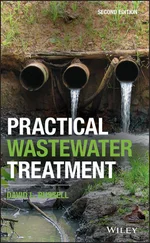1 ...6 7 8 10 11 12 ...18 Catalytic ozonation has also occupied space for the treatment of industrial effluents. Bilińska et al. (2020) used catalytic ozonation to remove organic matter and toxicity in raw effluent from the textile industry, evaluating three types of catalysts. As a result, they observed that, with the best‐performing catalyst (activated carbon), 35% of TOC and 40% of COD were removed, and toxicity decreased by 30%. Chávez et al. (2019) evaluated the feasibility of a photocatalytic ozonation treatment preceded by aerobic biodegradation in a sequencing batch reactor (SBR). The system was assembled on a bench scale to treat wastewaters from petrochemical and cosmetic products with a high organic load (TOC > 3 g/L, COD > 12 g/L, BOD 5> 2 g/L), other toxic compounds, and metals. Due to the quality of the effluent, it was diluted with urban wastewater (1:5) for treatment in the SBR. The implemented approach achieved a final effluent suitable for disposal according to environmental regulations (COD < 125 mg/L, BOD 5< 25 mg/L).
Zeolites are also widely used as an adsorbent to remove organic contaminants in the treatment of industrial wastewaters. Zeolites are porous materials with a three‐dimensional structure used as an adsorbent base during treatment (Hashemi et al., 2018). Using a surfactant‐modified zeolite, Hashemi et al. (2018) reported that the TOC content of olefin plant wastewater was reduced up to 89%.
Contaminants of Emerging Concern (CECs)
CECs are any substances originating from human activity or natural occurrence not generally monitored in the environment (Nawaz and Sengupta, 2019). They mainly result from the discharge of wastewaters (industrial or domestic), and conventional treatment processes are not capable of degrading these compounds. They can also be present in surface and drinking water. Even in very low concentrations (μg/L or ng/L), they can be bioaccumulative and become potentially dangerous to the ecosystem and human health (Prada‐Vásquez et al., 2020).
CECs include pharmaceutical and personal care products (PPCPs), pesticides, POPs, EDCs, flame retardants (FRs), artificial sweeteners (ASWs), various industrial chemicals, etc. (Salimi et al., 2017). Two criteria for the long‐term classification of a compound as a CEC are persistence in the environment and/or potential ecotoxicological and harmful effects to humans (Nawaz and Sengupta, 2019). Countless compounds fit in this classification, and over time, new substances and their effects are discovered, so the list of CEC has been constantly updated. Salimi et al. (2017) listed a series of CECs, some of which are shown in Table 1.4.
Table 1.4 Classification of some CECs such as PPCPs, EDCs, FRs, pesticides, and ASWs.
Source: Adapted from Salimi et al., 2017.
| Classes |
Used |
Examples |
| PPCPs |
| Analgesics |
Pain reliever |
Acetaminophen and acetylsalicylic acid |
| Anti‐epileptic drugs |
Anticonvulsant |
Carbamazepine and primidone |
| Antihyperlipidemics |
Lipid regulators |
Gemfibrozil, clofibric acid, and fenofibric acid |
| Synthetic hormones |
Hormone |
Estrone, 17a‐estradiol, 17a‐ethinylestradiol,and estriol |
| Antimicrobials |
Antibiotic |
Erythromycin, sulfamethoxazole, and tetracycline |
| Antiseptic |
Triclosan, biphenylol, and chlorophene |
| Polycyclic |
Musk fragrances |
Hexahydrohexamethyl‐cyclopentabenzopyran |
| Other |
Insect repellant |
N, N‐Diethyl‐meta‐toluamide (DEET) |
| Fragrances |
Acetophenone |
| Stimulant |
Caffeine |
| EDCs |
| Steroids |
Natural human estrogen metabolite |
17b‐estradiolEstrone |
| Alkylphenols |
Manufacture of household andindustrial products |
Nonylphenol and octylphenol |
| Polyaromatic compounds |
|
Polychlorinated biphenyls and brominated flame retardants |
| Organic oxygen compounds |
Plasticizers |
Phthalates |
| Industrial production of polycarbonates and epoxy resins |
BPA |
| Pesticides |
Insecticides, herbicides, fungicides |
Atrazine, chlordane, and trifluralin |
| Others |
By‐products of various industrial and combustion processes |
Dioxins and furans |
| Flame retardants |
| Halogen‐containing flame retardants (fluorine, chlorine, bromine, or iodine) |
FR |
Brominated bisphenols and phenols |
| Inorganic hydroxide FRs |
FR |
Aluminum hydroxide and magnesiumhydroxide |
| Borate FRs |
FR |
Sodium borate and boric acid |
| Pesticides |
| Carbamates |
Herbicides, insecticides, and fungicide |
Carbendazim, benomyl, and carbaryl |
| Organochlorines |
Insecticides |
DDT, dieldrin, endrin, and endosulfan |
| Organophosphates |
Insecticides |
Diazinon, malathion, and chlorpyrifos |
| Artificial sweeteners |
| Artificial sweeteners |
Sugar substitutes |
Acesulfame, sucralose, saccharin, cyclama, aspartame, neotame, and neohesperidine dihydrochalcone |
CECs can result from commercial, domestic, agricultural, and industrial origins, like any pollutant. They can be detected in remote and unlikely areas due to their persistence and long‐distance mobility. Some of these substances can disturb the endocrine system, interfering with the hormonal action of animals and humans; they are referred to as EDCs and can cause reproductive effects, hormonal dysfunction, fertility problems, and diseases such as cancer, etc. (Nawaz and Sengupta, 2019; EPA, 2020).
EDCs include steroids, alkylphenols, polyaromatics, organic oxygen compounds, pesticides, and others (Salimi et al., 2017). They can be synthetic or natural. Examples of synthetic compounds are alkylphenols, phthalates, polychlorinated biphenyls, bisphenol A (BPA), and pharmaceutical agents such as estrogen 17α‐ethinylestradiol (Salimi et al., 2017). Among natural EDCs are the estrogens estrone, estriol, and 17β‐estradiol. Estrogens are hormones responsible for several female endocrine functions, and some of them can be used in the production of contraceptives and hormone replacement medicine (Hamid and Eskicioglu, 2012).
Few studies in the literature discuss the biodegradation, metabolization, and effects of CECs (Salimi et al., 2017). However, the advance of modern technologies, such as high‐performance liquid chromatography, allow the detection of substances in lower concentrations (on the order of ng/L) in different environmental matrices. Thus, studies have been carried out to investigate and improve the removal of these compounds from both domestic and industrial wastewaters. Biological treatment (activated sludge and biofilm‐based processes) and AOPs (ozonation, TiO 2photocatalysis, Fenton process, and photo‐Fenton process) have been extensively investigated for this purpose.
The primary contaminants found in industrial wastewater have been shown to commonly originate from human activities. Industrial wastes are becoming more recalcitrant, complex, and abundant due to the increasing development of society, and the list of pollutants. This chapter addressed the effects of toxic heavy metals, oil and grease, biocides, dyes, recalcitrant and organic compounds, and contaminants of emerging concern.
Regarding toxic heavy metals, it is important to differentiate between heavy metals and toxic metals. The classification of many elements and compounds is largely based on their density. However, not every heavy element is toxic. With that in mind, copper, lead, chromium, cadmium, zinc, and arsenic are the most important. Bioaccumulation, vomiting, diarrhea, and inflammation are the usual symptoms of toxic heavy metal poisoning. Furthermore, such pollutants negatively impact humans and other species, hindering their reproductivity and metabolism, which unbalances the food chain as a whole.
Читать дальше












